A-maize-ing flavor
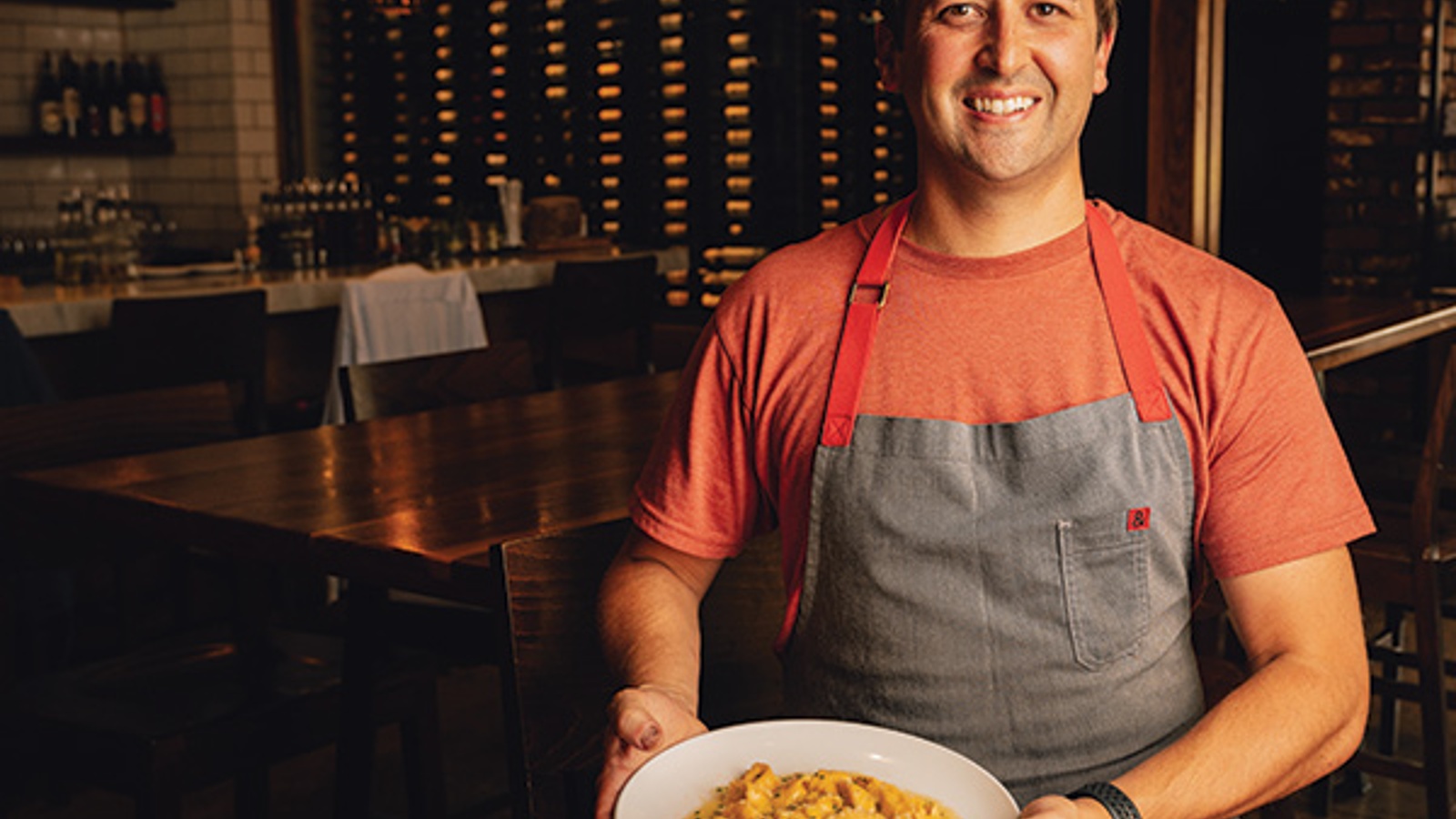
May/June 2022 California Bountiful magazine
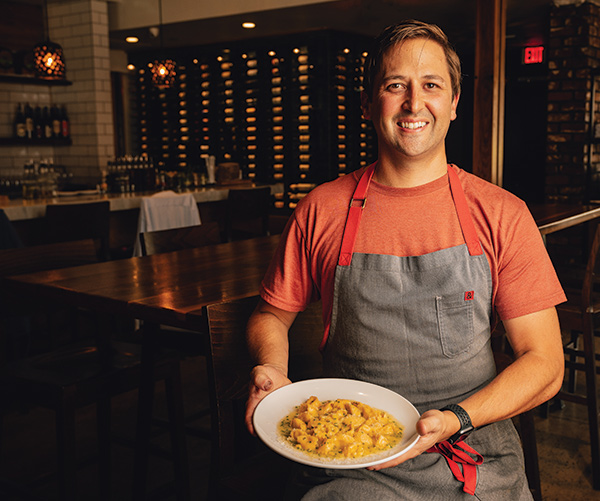
Fresno State gets an earful of praise for its popular sweet corn
Story by Cyndee Fontana-Ott
Restaurant photos by Tomas Ovalle
Farm photos by Geoff Thurner, courtesy of Fresno State
Chef Jimmy Pardini wasn't counting on Fresno State sweet corn as he prepared to open his first Fresno restaurant in the summer of 2015.
The menu for The Annex Kitchen was pretty much set before the campus farm produced its first crop of sweet corn. Even so, Pardini snagged a few ears and began experimenting in the kitchen.
The resulting filled pasta—a luscious agnolotti leveraging every kernel of sweet corn goodness—grabbed a spot on the menu and today remains the most popular seasonal dish at the Italian-inspired restaurant. One reason is Pardini's culinary chops, but the other is a sweet corn that's been a force of nature for decades.
"I think it's the flavor, quality and texture—and the fact that it's so close," Pardini said. "The fresher the corn is, the better it tastes. And we get the corn from 15 minutes down the street."
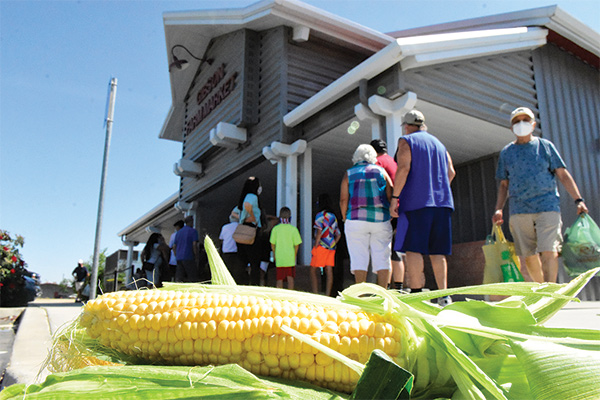
A seasonal favorite
So, count him among the Central Valley folks who love Fresno State's sweet corn. They emerge around Memorial Day every year, standing in DMV-like lines at the campus Rue and Gwen Gibson Farm Market to shop the first harvest of the season.
"For us, it's the kickoff of summer—especially for the market," said farm manager Mark Salwasser. The taste and quality of Fresno State's sweet corn "is right at the top, in my opinion."
There's really no mystery other than "it's picked at the optimum time and it's cared for with the care and love of our students," he said. That includes the watchful eyes like those of Guillermo Cantu, a plant science major and student assistant for corn and other vegetables in 2021.
"There is such a high expectation for good-quality corn, so we make sure to pay extra attention to it," he said. "We do a really good job taking care of it. We put a lot of effort into making sure it's growing the right way."
The Central Valley is a prime growing location for sweet corn. The crop is one of many in which California leads the nation in production, according to the California Agricultural Statistics Review 2019-2020.
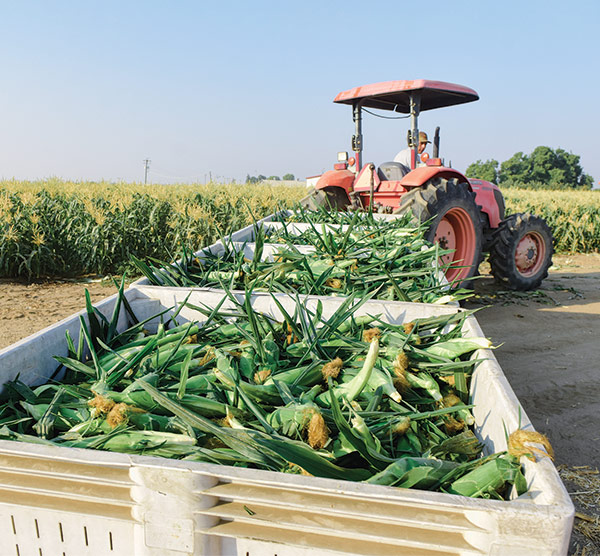
University tradition
At Fresno State, the sweet corn legend dates back to the 1980s, when a professor first asked students to plant a few acres. Sales began shortly after that.
Today, sweet corn—both yellow and white—is one of the best-known crops grown on the campus formally known as California State University, Fresno. The University Agricultural Laboratory—the farm—occupies roughly 1,000 acres on the otherwise urban campus and produces everything from wine and table grapes to beef and almonds.
This outdoor classroom offers hands-on learning opportunities and jobs for students. The Gibson Farm Market is the hub for selling the fruit of that land, and last year sold more than 500,000 ears of sweet corn—on par with prior seasons.
The sweet corn cycle begins in January when the first seeds are planted. The crop is grown on roughly 70 acres, and the waves of harvest generally start around Memorial Day and end around Labor Day.
According to Salwasser, there's nothing special about the two sweet corn varieties—the yellow is Vision, the white is No. 3274—planted at Fresno State. Both are commonly available.
"There's hundreds and hundreds of varieties of sweet corn out there," he said. "There's a lot of good ones, but those are the ones that we feel grow the best in our soil."
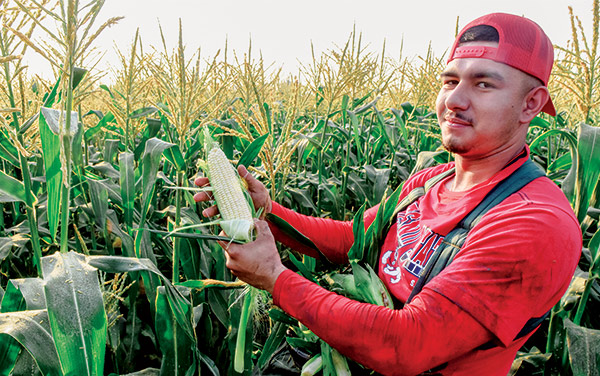
The right soil and care
With an average growth cycle of about 80 days—depending on the weather—the sweet corn is carefully nurtured from seed to harvest by students like Cantu. That means planting at the best time and depth, delivering the right balance of water and nutrients, and watching for pests like corn ear worms and spider mites along with stresses like summer heat.
Choosing the right time to harvest is another critical part of the equation. Salwasser calls it "more art than science" that considers factors such as the girth of an ear—signaling that the kernels are full of water and sugar—and sampling in the field.
"There's a small window of time when the sugar's the highest and the sugars aren't turning to starch," he said. "Picking it at the optimum time is probably the biggest thing."
Freshly picked ears are delivered to cold storage on campus, held there briefly and then sent to the farm market for sale. White corn is often the first harvest.
Cantu, who grew up in the small city of Kerman west of Fresno, last season helped supervise crews that pass through the rows to collect ears in picking bags. Each field may be picked multiple times over several days as workers focus on harvesting just the right ears.
Cantu has been around agriculture his entire life; his father is a labor contractor. He worked two years as a student assistant for sweet corn, although he didn't know much about the heralded crop and its faithful fans until he got to campus.
"It was definitely something I learned," said Cantu, who prefers the yellow variety for its sweetness. "Seeing the lines and everything that first day we started selling it was pretty incredible."
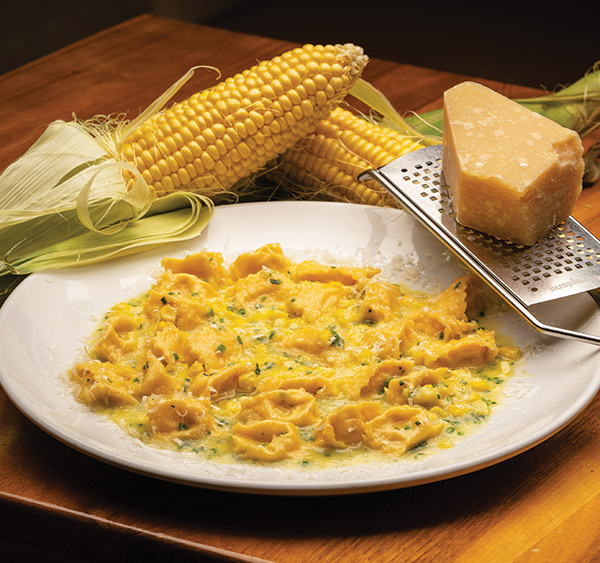
'The corn is special'
Pardini, of The Annex Kitchen, says the restaurant may go through 200 to 300 ears a week to prepare its signature sweet corn agnolotti. The pasta quickly became a local favorite—then chef and food critic Simon Majumdar extended its fame by naming the agnolotti his top dish of 2016. That was shared on Instagram and an episode of the Food Network's "The Best Thing I Ever Ate."
Pardini describes the agnolotti as "something that's unique. I think when people eat it for the first time, they are surprised at what they are tasting."
He guards the recipe, but the ingredients include homemade pasta, a blend of pureed sweet corn and mascarpone cheese, a few chili flakes, a butter sauce and a finish of chives.
Pardini isn't done creating new dishes with Fresno State sweet corn. His second restaurant, Annesso Pizzeria, opened last summer—and he's considering some options for the upcoming season. Maybe a sweet corn pizza?
"It's still in the developmental stages," Pardini said. "But the corn is special. The community really gets excited for that corn and as a chef, I get excited to find a way to apply it and share my own interpretation."

